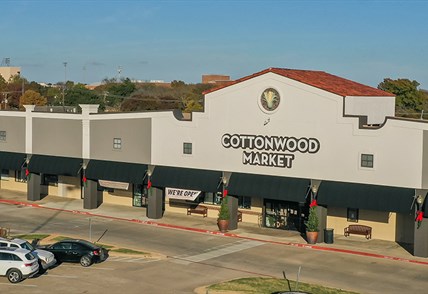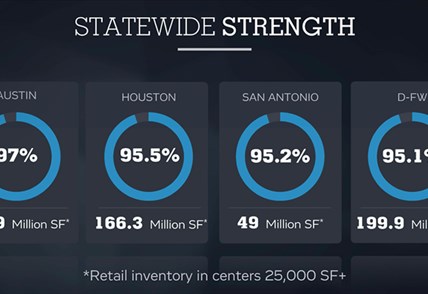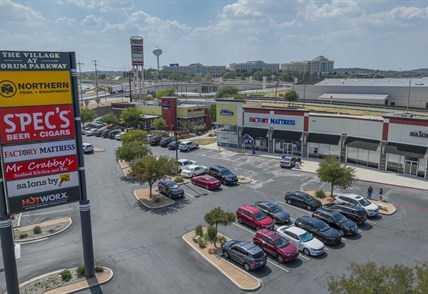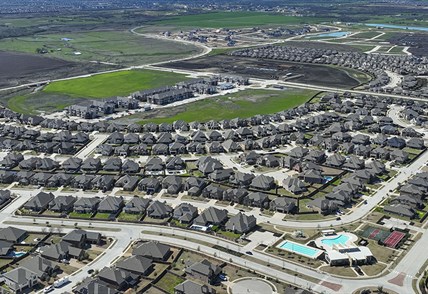Austin, the longtime home to the healthiest major-metro retail market in Texas, continued to maintain that position despite softening in its overall occupancy levels.
As of year-end 2018, the Austin-area retail market shows an overall occupancy rate of approximately 95.8 percent, down from 96.1 percent at mid-year due to the store closings from outmoded legacy retailers.
The market’s largest vacancy spaces are found in box stores that closed due to the nationwide problems of legacy retailers Sears and Toys “R” Us. A truer picture of the health of the market can be seen in Austin-area retail projects, which are maintaining some of their highest occupancy rates on record due to steady tenant demand at a time when the construction of new retail space remains near record lows. The vacancy also is mitigated by new construction that opened significantly leased, as well as the backfilling of existing space, all of which accounted for hundreds of thousands of square feet of occupancy in 2018.
Weitzman reviews an Austin-area retail space inventory of 49.5 million in retail projects with 25,000 square feet or more.
Even with the increase in vacant space, Austin remains the strongest major-metro retail market in Texas, and one of the strongest in the United States, in terms of occupancy.
During 2018, the market saw Sears anchor stores close, including a Sears Grand store at IH-35 and Parmer Lane, and traditional Sears anchor stores at Lakeline Mall, Barton Creek Mall and Hancock Center. These stores, each totaling between 172,000 and 185,000 square feet, now represent the largest single source of vacancy in the Austin area.
Austin also saw four metro-area locations of Toys “R” Us and Babies “R” Us close. The retailer closed three area “Toys” stores totaling approximately 116,500 square feet of GLA, as well as a 29,960-square-foot location for Babies “R” Us in Sunset Valley.
In terms of smaller concepts, Mattress Firm closed more than a dozen area locations. However, the outlook for these vacancies is positive, as a number of retailers are already in the works to backfill these well-located, well-positioned former mattress stores.
The best-located of these vacancies are attracting tenant interest, and there is a possibility that some or all of the locations will be redeveloped and/or subdivided for multiple tenants. For example, a portion of the vacant Sears Grand will open in 2019 as a multi-screen cinema. In a market as tight as Austin’s, the vacancies can represent opportunity in a market that not only reports low vacancy, but also little additional new space.
This period of low construction is reflected in the numbers. Over the past six years, from 2013 through 2018, the market has added a total of approximately 5.2 million square feet. That total is not much more than the 4.2 million square feet added in 2007 – just one year. During 2008, when the market was first entering the great recession, new space totaled 2.8 million square feet.
For calendar year 2018, the market added approximately 670,000 square feet of retail space in new and expanded projects. The total is exceptionally low, especially for a major metro area that reports high retail occupancy, a strong housing market and the lowest major-metro unemployment rate in Texas. The 2018 construction total is a slight increase compared to the 640,000 square feet added in 2017, which itself was historically low for the market.
These findings are based on a review of retail market conditions for the greater Austin area as of year-end 2018 by Weitzman, a statewide retail-focused commercial real estate services firm. The market’s occupancy rate is based on an inventory of approximately 49.5 million square feet of retail space in projects with 25,000 square feet or more.




